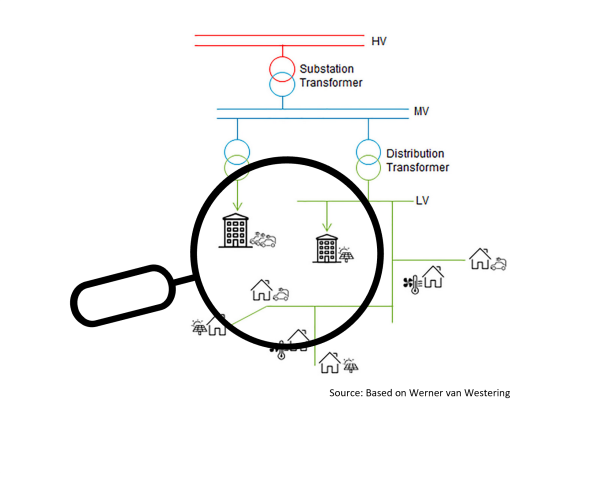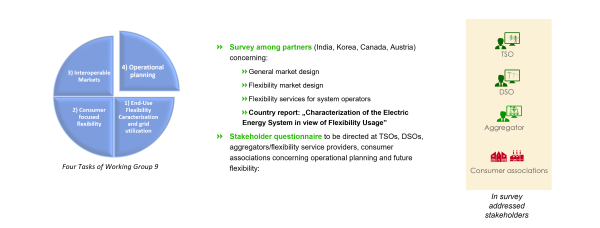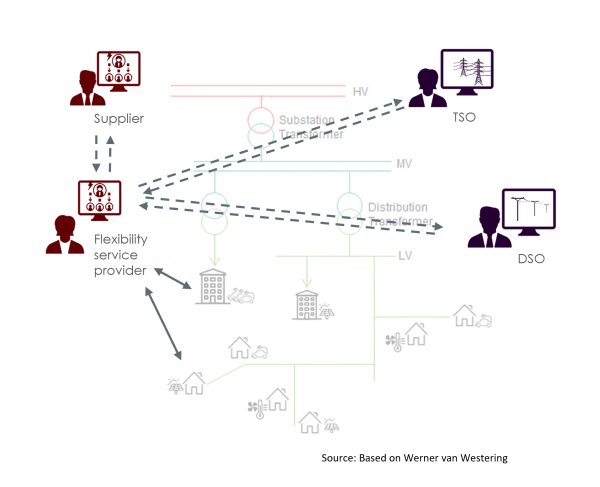IEA ISGAN Working Group 9: Flexibility Markets - Development and Implementation (Working Period 2021 - 2023)
Short Description
The objectives of Working Group 9 include expanding and disseminating the understanding of market mechanisms for decentralized flexibilities. It has encouraged knowledge building and international exchange, facilitating the discovery of new strategies and insights applicable to similar issues. It also allows for the validation of different solution approaches with international experts.
Austria's participation in this Working Group adds value by positioning Austrian projects internationally and connecting with relevant stakeholders, fostering new collaborations and joint projects that benefit the entire Austrian research and industrial landscape in the field of flexibility markets in power supply.
The focus in 2022 and 2023 was placed on four key areas:
- Task 1 (Lead: Canada): End-Use Flexibility Characterization and Grid Utilization
- Task 2 (Lead: Norway): Consumer-focused flexibility
- Task 3 (Lead: United Kingdom): Interoperable markets
- Task 4 (Lead: Austria): Operational planning
From the Austrian perspective, the project goals included establishing definitions and characterizations of flexibility markets, enhancing understanding of the interaction between different flexibility markets (Redispatch, balancing reserve, spot markets), and identifying best practices and contributions to flexibility standardization.
Task 4, led by Austria, focused on the consideration of flexibility in the operational and long-term planning of grid operators, suppliers, and aggregators. The work started with an examination of electricity systems in participating countries, followed by the creation of a specific questionnaire for various stakeholder groups. Task 4 involved collaboration with India, Canada, the UK, and Belgium. Switzerland joined as an additional partner.
Results were presented to a broad audience within events like the "Flexibility Frontier Workshop - An international explorative webinar," the "International Conference on European Energy Markets (EEM)," and the Autumn Meeting of the Technology Platform Smart Grids Austria. Additionally, the IEEE Journal Paper "Challenges and opportunities of flexibility markets related to operational planning" was published as a result of the conference. Further detailed results were also published on the ISGAN website in the form of two reports and a fact sheet.
Project Images
Terms of use: The pictures listed underneath the header “Project Pictures” originate from the projects in the frame of the programmes City of Tomorrow, Building of Tomorrow and the IEA Research Cooperation. They may be used credited for non-commercial purposes under the Creative Commons License Attribution-NonCommercial (CC BY-NC).
Publications
Publications can be viewed on the page in German.
Participants
- Belgium
- India
- Japan
- Canada
- Korea
- Norway
- Austria
- Sweden
- Switzerland
- Spain
- United Kingdom (WG lead)
Contact Address
AIT Austrian Institute of Technology GmbH
Regina Hemm
Giefinggasse 4
1210 Wien
E-mail: regina.hemm@ait.ac.at



